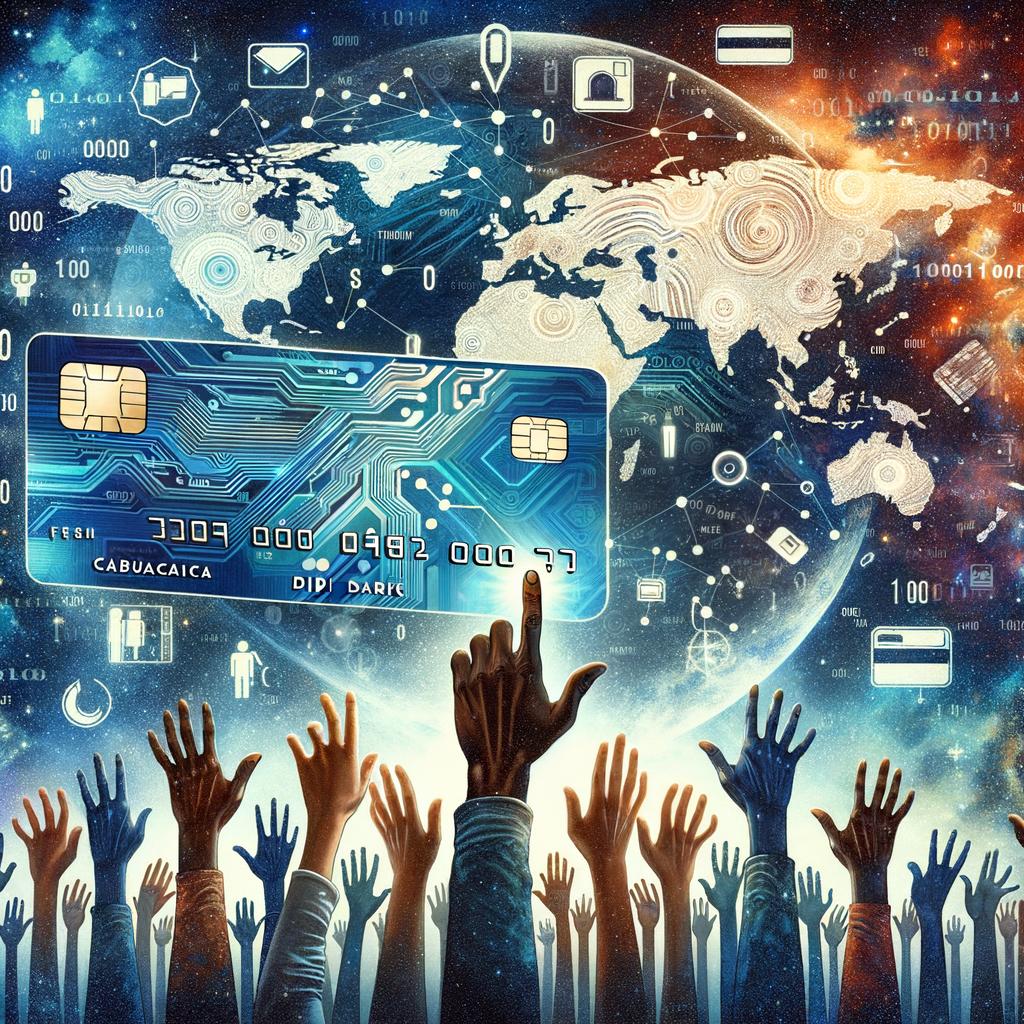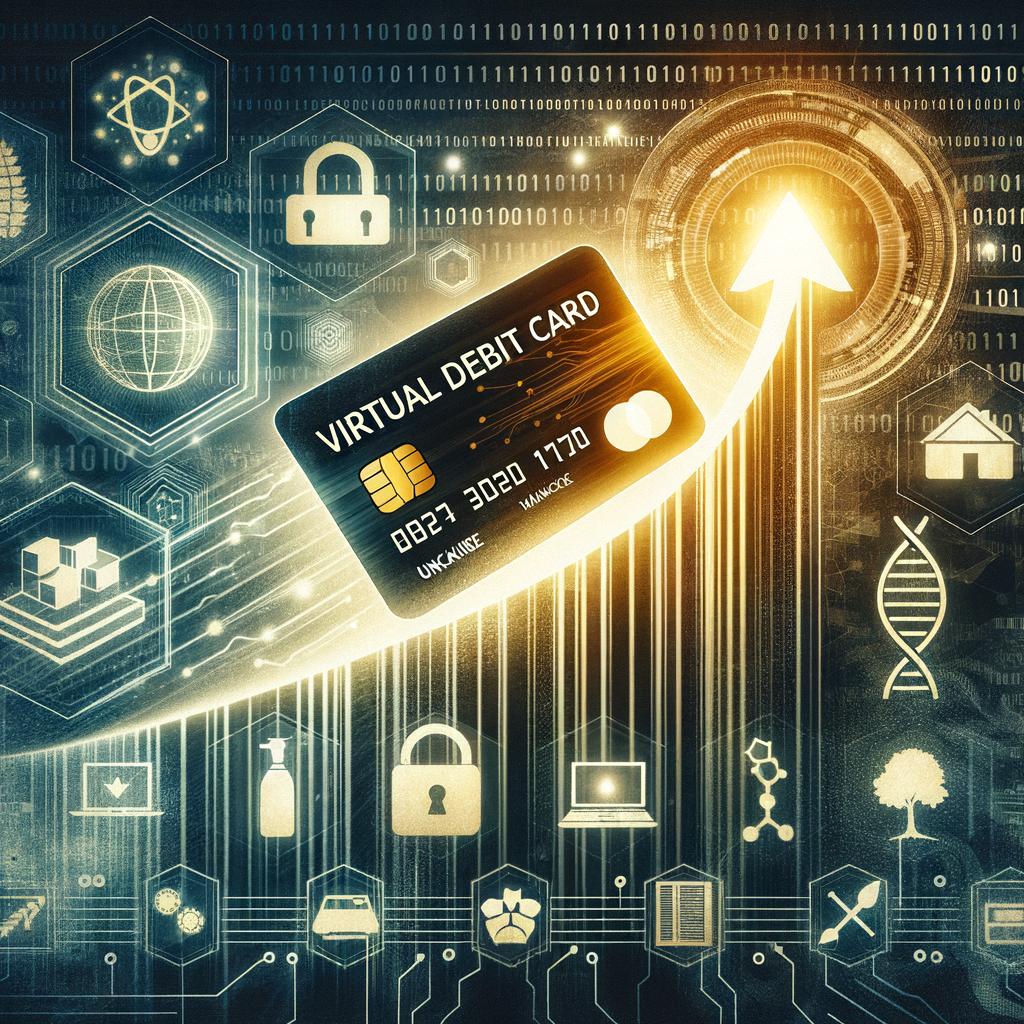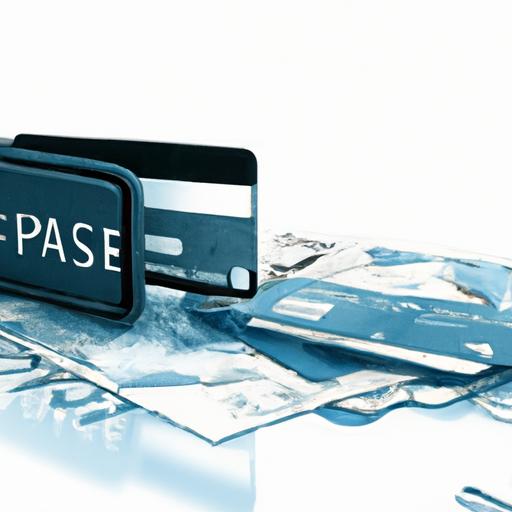Types of Card Processing
Article on different types of card processing options like credit card, debit card, and e-wallet transactions.
Navigating the World of Debit Card Limitations and Overdrafts
You’re strolling through the mall, browsing all those amazing sales, and your eyes land on the perfect pair of shoes. You know they’ll complete your collection and instantly boost your style game, so you confidently whip out your debit card, ready to make your purchase. But hold on a moment, my friend! Are you aware that your trusty plastic buddy might have some sneaky limitations and lurking overdraft fees? Don’t worry, we’ve got you covered with some crucial information to keep you on top of your financial game.
First things first, let’s talk about debit card limitations. Picture this: it’s a cozy Sunday morning, and you’re craving a fancy brunch at that new trendy spot everyone’s been raving about. But before you daydream about those delicious eggs benedict, make sure you know your daily spending limit. Many banks set a cap on how much you can spend using your debit card in a day. So, if that limit is lower than the amount you had projected to spend, you might have to put your gastronomical dreams on hold until tomorrow. It’s always a good idea to reach out to your bank and ask about any spending limitations they might have imposed on your card.
Now, here’s where things get a little trickier – overdrafts! Imagine you’re all excited about that limited-edition vinyl record, and you swipe your debit card, all set to rock out to your heart’s content. But wait, what if you don’t have enough funds in your account to cover the purchase? That’s when overdraft fees come barging in, like rude roommates crashing your party. These fees can be a real headache, and they vary from bank to bank. It’s crucial to be aware of your bank’s policies on overdraft charges and how they may impact your precious hard-earned cash. Nobody wants to pay an outrageous fee for buying that catchy tune.
So, how can you avoid these pesky overdraft fees like a seasoned financial ninja? One option is to link your debit card to your savings account or apply for overdraft protection. This means that if you swipe your card and there aren’t enough funds in your checking account, the bank will automatically transfer money from your linked savings account to cover the purchase. However, keep in mind that some banks might still charge you a fee for this service, but it could be significantly lower than the dreaded overdraft punishment.
Another way to steer clear of overdraft madness is by monitoring your account balance like a hawk. Download your bank’s mobile app – nifty piece of technology, really – and check your balance regularly. This way, you can keep track of your spending, catch any discrepancies, and avoid overdrawing your account unintentionally. It’s like being your own financial superhero, but without the cape and the cool gadgets.
Finally, it’s essential to stick to a budget and live within your means. I know, it’s a real buzzkill, but trust me, it’s for your own good. Before splurging on that fancy dinner or the latest tech gadget, take a moment to evaluate your financial situation. Can you afford it without jeopardizing your future financial goals? If not, it might be wiser to save up a bit longer or explore more affordable alternatives. Remember, it’s all about making informed decisions that will keep you sailing smoothly through the vast ocean of financial responsibilities.
So, dear reader, as you step out into the world armed with your debit card, remember to be mindful of its limitations and the potential overdraft booby traps awaiting you. Stay informed, stay vigilant, and stay afloat in the sea of economic adventures. Now, go forth and conquer that shopping spree – only within your financial superpowers, of course!
Are you ready to embark on your next adventure abroad? Whether you’re planning to sip margaritas on a sandy beach or explore the bustling streets of a foreign city, one thing is for certain: you’ll need some moolah to fuel your escapades. But fret not, fellow wanderluster! Gone are the days of clunky traveler’s checks and fumbling with foreign currency. In today’s cashless world, credit and debit cards have become our trusty companions, and they’re here to save the day, no matter where your journey takes you.
First things first: it’s crucial to inform your card provider about your gallivanting plans. Picture this: you’re enjoying a delicious gelato in Rome, and suddenly, your card stops working. Disaster strikes! So, before you hop on that plane, take a moment to notify your bank of your whereabouts. Trust me, they’ll appreciate the heads-up, and it’ll prevent any unwanted surprises when you’re trying to pay for those mouthwatering tapas in Barcelona.
Now that you’ve got your global travel buddy in tow, let’s talk about exchange rates. Ah, the wonderful world of currencies! It’s like a never-ending game of Monopoly, except the stakes are higher. When using your card abroad, you may encounter a small fee added to your transactions. But fear not, my adventurer! This fee is usually a tiny fraction of what you’d pay to exchange your hard-earned cash at those dodgy airport currency exchange kiosks. Just think of it as a small price to pay for the convenience and peace of mind that comes with whipping out your plastic in any corner of the globe.
Here comes the million-dollar question: should you choose credit or debit? Well, dear wanderer, it’s all about personal preference and the perks that come with each option. Credit cards often offer extra layers of protection, like travel insurance, extended warranties, and juicy rewards programs. Plus, if you ever find yourself in a bind, you can rely on that little thing called “credit” to bail you out. On the other hand, debit cards work directly with your bank account, sparing you the temptation to overspend. It’s like having a money-laundering genie tucked away in your wallet – except way less illegal.
Now, let’s not forget about those pesky card skimmers lurking in the shadows of your dream destinations. These sneaky devils are out to scam unsuspecting travelers, and you, my friend, need to be one step ahead. To avoid falling victim to their malevolent tricks, keep your eyes peeled for suspicious-looking card readers and always use ATMs located in well-lit, crowded areas. And remember, a little paranoia can go a long way when it comes to protecting your hard-earned cash.
Last but not least, let’s address the holy grail of international transactions: currency conversion. When you’re asked if you’d like to be charged in your home currency or the local one, it’s time to put on your savvy traveler’s cap. Choosing your home currency may seem like a cozy option, but beware! Dynamic currency conversion can come with exorbitant fees and unfavorable exchange rates. So, do yourself a favor and opt for the local currency. Not only will you avoid unnecessary charges, but you’ll also feel like a true local as you confidently hand over your card.
In a world where technology reigns supreme, our trusty credit and debit cards have become our steadfast companions on our globetrotting adventures. So, my fellow explorers, go forth and swipe away, knowing that your plastic pal has got your back, no matter where your wanderlust takes you. Happy travels!
So, you’ve finally decided to take your small business to the next level and start accepting card payments. Congratulations! This is a major step towards convenience and growth. But choosing the right card processing service can feel like maneuvering through a dense jungle, filled with countless options and confusing terminology. Don’t worry though, we’ve got your back!
First and foremost, let’s talk fees. We all know how crucial it is to keep costs low when you’re starting out. Look for a service that offers transparent pricing without any hidden fees. You deserve to know exactly what you’re getting yourself into. Be wary of providers who try to bury fees under complex terminology or excessive jargon.
Now, think about the types of payments you want to accept. Will you solely be processing credit or debit card payments, or do you also need to handle mobile wallets like Apple Pay or Google Pay? Make sure the service you choose can accommodate all the payment methods your customers might use.
Besides the types of payments, consider the hardware requirements. Do you need a physical card terminal, or do you prefer a virtual solution that lets you accept payments through your phone or computer? Remember to factor in costs for purchasing or leasing any necessary equipment. Your budget and business model will largely dictate which option suits you best.
Next on the checklist is reliability. Nothing is more frustrating than having your card processing system go down when customers are queueing up to make a purchase. Look for a service provider with a solid record of uptime and minimal technical issues. Check online reviews, reach out to other small businesses for recommendations, and don’t hesitate to contact customer support to gauge their responsiveness and expertise.
Security should also be on your mind. Small businesses are often targets for fraudsters, so it’s essential to choose a secure card processing service with advanced encryption and fraud detection systems. Inform yourself about any liability you might face in case of a data breach, and ensure your provider offers robust protection against cyber threats.
Lastly, don’t forget about the responsiveness of the provider’s customer support. As a small business, you rely heavily on prompt, helpful assistance when issues arise. Choose a service that offers 24/7 customer support via multiple channels – phone, email, and live chat. It’s better to be safe than sorry, especially when you’re dealing with customers’ money.
Choosing the right card processing service might seem like a daunting task, but armed with these tips, you’re well on your way to making an informed decision. Keep your costs low, ensure compatibility with your desired payment methods, prioritize reliability and security, and never compromise on customer support. With the right service by your side, your small business will be unstoppable in the world of card payments.
Are you tired of carrying around a wad of cash or worrying about your physical debit card getting lost or stolen? Well, fret no more because the future is here! Welcome to the rise of virtual debit cards – the ultimate combination of safety and simplicity that will change the way you make payments forever.
Picture this: you’re at your favorite coffee shop, eagerly waiting to grab your morning cup of joe. As you reach for your wallet, panic sets in. Your trusty debit card isn’t where it’s supposed to be. It’s gone. A shiver runs down your spine as you imagine all the worst-case scenarios. But wait! You remember you have a virtual debit card on your phone, and suddenly, a wave of relief washes over you. Crisis averted!
Virtual debit cards are like a magic trick that lets you carry your payment method right in the palm of your hand, or rather, in the depths of your smartphone. With just a few taps on your screen, you can easily access all your financial information without the worry of misplacing a physical card. It’s like having a personal payment wizard in your pocket, there to save the day whenever you need it.
But what makes virtual debit cards safer than their physical counterparts, you ask? Well, my friend, let me enlighten you. By using a virtual debit card, you eliminate the risk of theft or loss of your actual card. No more frantic calls to your bank, canceling your card, and waiting for a new one to arrive. With virtual debit cards, all your information is securely stored on your mobile device’s encrypted vault – the holy grail of card security. It’s like Fort Knox, but even more high-tech and way cooler.
Not only do virtual debit cards offer top-notch security, but they also make online shopping a breeze. Nobody likes being asked to enter their card details on shady websites or filling out cumbersome forms. With virtual cards, you generate a unique card number for each transaction, so even if one gets compromised, your primary card remains untouched. Plus, you can set spending limits, expiration dates, and even restrict transaction types – giving you ultimate control over your spending habits.
But let’s not forget one of the biggest perks of virtual debit cards – their simplicity. Remember those countless visits to the bank, waiting in long lines, and dealing with grumpy tellers? Well, say goodbye to all that hassle. With virtual cards, you can easily manage your finances from the comfort of your couch. Just a simple tap of your finger, and you can check your balance, review transactions, or transfer money between accounts without even putting pants on. It’s like a financial wonderland, where convenience rules supreme.
In the age of smartphones and digital innovation, it’s no surprise that virtual debit cards are gaining popularity. They offer a perfect blend of safety and simplicity, reshaping the way we interact with our money. So, why stick to the old ways when the future is right at your fingertips? Embrace the rise of virtual debit cards and let the magic of modern technology transform your financial life for the better.
E-Wallets Explained: The Future of Digital Payments
Imagine stepping out of your house with nothing but your smartphone in hand. No bulky wallet filled with notes and cards weighing you down. Sounds liberating, right? Welcome to the world of e-wallets, where the future of digital payments lies.
So, what exactly is an e-wallet? Well, think of it as a virtual pocket that safely stores your money and payment information on your smartphone or any internet-enabled device. It’s like having your own personal bank right at your fingertips, but without all the hassle.
Now, you might be wondering, “But aren’t my good old plastic cards doing just fine?” Sure, they’ve been around for a while, but e-wallets are game-changers. They offer a dazzling array of features that make transactions smoother, faster, and more secure. Plus, the convenience they bring is unparalleled.
One of the standout advantages is that e-wallets allow you to make contactless payments. No more fumbling with cards, entering pins, or even signing receipts. Just tap your phone on a compatible payment terminal, and voilà, your transaction is complete! It’s like magic – only this time it’s real.
But the perks don’t stop there! E-wallets offer a seamless integration with online shopping platforms. Gone are the days of laboriously entering your card details every single time you make a purchase. With a simple click, you’re done – no matter if you’re buying your weekly groceries or splurging on that pair of shoes you’ve been eyeing.
Now, it wouldn’t be fair to talk about e-wallets without mentioning the security they provide. They employ state-of-the-art encryption technologies, ensuring that your sensitive information remains safe from prying eyes. So, goodbye to the constant paranoia of losing your wallet and all your cash in one fell swoop. E-wallets have got your back.
But here’s the cherry on top: e-wallets are not just about payments. They also let you transfer money to friends and family instantly. Need to split a restaurant bill? No problem. Simply enter the amount, select the recipient, and zap! The money is on its way, saving everyone the headache of finding exact change.
The future of digital payments is knocking at your door, and e-wallets are leading the way. No more digging through pockets and bags in search of loose change. No more worrying about card readers swallowing your precious plastic. With e-wallets, payments become effortless, secure, and exciting.
Of course, like any new technology, there will always be skeptics. Some might argue that e-wallets are just another way for companies to track our spending habits. But here’s the thing: every transaction you make with a card or cash also leaves a trace. And with proper data protection protocols, your information remains confidential.
So, whether you’re a tech-savvy early adopter or a curious observer, e-wallets have already started transforming the way we handle money. Embrace the future of digital payments, and let those little virtual pockets revolutionize your financial transactions. It’s time to say goodbye to the crowded wallet and enter the sleek and streamlined world of e-wallets!
The Future of Payment Processing: Trends to Watch
Picture this: you’re strolling down a busy street, trying to decide where to grab a well-deserved lunch. The aroma of exotic spices from a food truck catches your attention, and you head over to see what’s on offer. You choose a mouthwatering dish, grab your phone, and simply tap it against the vendor’s payment device to complete your purchase. No cash, no cards, just a seamless transaction. This scenario may soon become the new norm as payment processing leaps into the future with some exciting trends to watch out for.
1. Contactless Payments: Wave goodbye to chip and PIN. These days, more and more people are using contactless payment methods, and it’s only set to explode. With the rise of digital wallets such as Apple Pay and Google Wallet, making payments has become as easy as one tap on your smartphone. Not only does this save time and hassle, but it also offers enhanced security by replacing sensitive card data with encrypted tokens.
2. Biometric Authentication: Say farewell to PINs and passwords. Biometric authentication methods are the hottest trend in payment processing, allowing individuals to verify their identity using unique physical or behavioral characteristics. From fingerprint and facial recognition to iris scanning and voice authentication, biometrics offer a convenient and secure way to authorize transactions. Hesitant about leaving your identity in the hands of machines? Don’t be—they’re getting smarter every day.
3. Internet of Things (IoT): Payment processing is set to seamlessly integrate with IoT devices, transforming everyday objects into payment terminals. Imagine your fridge ordering groceries and paying for them automatically, or your car settling the fuel bill with just a tap. As connected devices become more prevalent, expect to see a surge in “smart payments” where transactions occur in the background without any human interaction. Your toaster may not seem that exciting, but it could soon be capable of making financial decisions!
4. Cryptocurrencies and Blockchain: If you haven’t heard about Bitcoin or Ethereum, it’s time to catch up. Cryptocurrencies have revolutionized the way we perceive and use money. Powered by blockchain technology, digital currencies offer fast, secure, and decentralized transactions, eliminating the need for intermediaries. As Bitcoin gains mainstream acceptance, it’s only a matter of time before we see widespread adoption of cryptocurrencies in payment processing.
5. Subscription-based Models: The convenience of subscription-based services is hard to beat. From streaming platforms to meal kit deliveries, subscriptions are booming. In the future, expect payments to align with consumption habits. Rather than paying for individual items or experiences, you may choose an all-inclusive monthly fee that covers everything you need. While this trend may raise concerns about budget control, it also offers the freedom to access various products and services without owning them.
The future of payment processing is full of excitement and innovation. From contactless payments and biometric authentication to IoT integration, cryptocurrencies, and subscription-based models, our payment landscape is undergoing a radical transformation. So, the next time you breeze through a transaction with just a single touch, remember that the possibilities are endless, and the future is here.
Have you ever stopped and considered how our financial transactions have evolved over the years? From the clunky ATMs of the past to the seamless online shopping experiences of today, the world of debit card transactions has come a long way. In this article, we’ll take a journey through time to explore the fascinating evolution of debit card transactions.
Back in the day, obtaining cash often necessitated a trip to the local bank or an ATM machine. Remember those colossal structures lurking on street corners, dispensing cash with a loud clunk? These metal beasts revolutionized the way we accessed our funds. No longer did we have to wait in long lines at the bank, fill out checks or carry bundles of cash. Instead, we simply inserted our card, entered a PIN, and out came crisp banknotes.
As the years rolled by, technology did not rest on its laurels. Soon, debit cards began to bear a magnetic stripe on the back, akin to credit cards. This tiny stripe held a wealth of information, allowing the card to be swiped, and the transaction completed with a mere signature. This simple innovation made card payments even more convenient, eliminating the need to remember a PIN for every transaction.
But who could have predicted the immense impact the internet would have on debit card transactions? Enter online shopping – the game-changer that brought with it a wave of convenience. Suddenly, we had access to a global marketplace at our fingertips, where we could purchase everything from clothes and gadgets to exotic spices and rare books, without ever leaving the comfort of our homes.
However, this new frontier came with its own set of challenges. As our debit cards began venturing into the virtual realm, concerns over security and fraud skyrocketed. In response, industry experts introduced innovative measures to ensure the safety of consumers’ financial information. The introduction of the CVV (Card Verification Value) code, for example, required users to provide the three-digit code on the back of their card during online transactions. Additionally, some banks began to provide virtual card numbers that expired after a single use, minimizing the risk of fraudulent activity.
Of course, as technology continued to evolve, so did our debit cards. With the rise of smartphones, many banks developed mobile apps that allowed users to manage their debit card transactions on the go. Nowadays, you can transfer funds, track expenses, and even lock your card if it goes missing, all from the comfort of your phone.
In recent years, contactless payment methods have also found their place in the world of debit card transactions. The advent of Near Field Communication (NFC) technology has enabled users to make payments by simply tapping their card on a payment terminal, without the need to enter a PIN or provide a signature. This seamless “tap and go” experience has further elevated the convenience associated with debit card transactions.
As we reflect on the captivating evolution of debit card transactions, it becomes clear just how far we’ve come. From the days when ATMs were considered futuristic marvels to the present, where we can buy products from halfway across the world with a simple tap, the journey has been nothing short of extraordinary. Who knows what the future holds for the world of debit card transactions? One thing’s for certain, though – it’s bound to be exciting!
Nowadays, it seems like plastic rules the world. From swiping our cards to making online purchases, the convenience and simplicity of card processing has become an integral part of our daily lives. But have you ever stopped to wonder about what goes on behind the scenes to ensure the safety and security of our personal information? Enter PCI compliance, the unsung hero in the world of card processing.
All right, so what exactly is PCI compliance? Picture this: you’re at a delightful flea market, surrounded by vibrant stalls and the scent of delicious street food lingering in the air. As you browse through the merchant’s goods, you spot something that catches your eye. Excitedly, you hand over your trusty credit card, ready to make a purchase. Little do you know, the moment you hand over your shiny piece of plastic, a complex web of security measures springs into action, ensuring that your sensitive information remains safe.
PCI compliance, or the Payment Card Industry Data Security Standard compliance, refers to a set of security standards established by the Payment Card Industry Security Standards Council (PCI SSC). This council, comprising major credit card companies like Visa, Mastercard, and American Express, endeavors to protect both consumers and businesses from the treacherous realm of credit card fraud and data breaches. Think of it as the ultimate bouncer at an exclusive club, making sure that only those who meet the strictest security requirements get in.
You see, when you swipe your card at that market, the merchant and their payment processor must adhere to these PCI compliance standards. Failure to do so can result in hefty fines, tarnished reputations, and loss of trust from customers. With cybercriminals constantly honing their skills, PCI compliance acts as the impenetrable fortress safeguarding your personal information against malicious attacks.
So, how does PCI compliance actually work? Take a moment to imagine that peaceful scene at the flea market again. Behind the scenes, the merchant and their payment processor maintain a secure environment, making sure that adequate firewalls are in place, access to cardholder data is limited, and regular security audits are conducted. They strive to create a secret hideaway where your credit card information can frolic, carefree and untouched by the prying hands of evildoers.
But how can you, the average consumer, ensure that the merchants you frequent are PCI compliant? Well, my fellow card-swipers, it’s all about the little padlock icon that pops up in your browser’s address bar when you’re making an online purchase. That tiny symbol is a beacon of hope, assuring you that the website you’re using has implemented proper security protocols to protect your data. Don’t underestimate its power – it’s like a superhero cape, ready to swoop in and shield you from harm.
The next time you go on a shopping spree or indulge in some retail therapy, spare a thought for the heroes working behind the scenes to keep your personal information safe. PCI compliance may not wear a cape or have a catchy theme tune, but it plays a vital role in ensuring the seamless and secure card processing experience we’ve come to rely on. So, let’s raise our glasses (or plastic cards!) to PCI compliance, the unsung defender of our digital wallets.
In a world where technology has taken over almost every aspect of our lives, it’s no surprise that even the way we handle our money has undergone a dramatic transformation. Gone are the days of carrying around bulging wallets filled with cash—instead, we now have the convenience of e-wallets and traditional banking options to manage our finances. But which one is truly best for you?
Let’s imagine you’re strolling through a bustling city street, mesmerized by the bright lights and tempting storefronts. Suddenly, you spot a cozy café with an irresistible aroma wafting from its doors. Your taste buds tingle with anticipation, but there’s a problem: your wallet is empty, and it’s Monday—an eternal enemy of payday. Desperate to satisfy your caffeine cravings, you whip out your smartphone, open your e-wallet app, and voila! Your trusty e-wallet saves the day with a seamless transaction, eliminating the need to trudge to the nearest ATM.
No need to worry if you’re unfamiliar with e-wallets; they’re simply digital platforms that enable you to store money and make electronic transactions securely. Think of it as having a virtual wallet stocked with your hard-earned funds—a financial Swiss army knife that allows you to pay bills, transfer money, and make purchases with a simple tap of your finger.
Convenience is undoubtedly the crown jewel of e-wallets. With just a few swipes, you can complete transactions anytime, anywhere, without having to deal with long queues or carrying stacks of cash. Whether you’re buying groceries, hailing a taxi, or purchasing concert tickets, your e-wallet has got you covered. Plus, it’s not just for the trendy young folk! E-wallets are gaining popularity across generations—quite literally, money at your fingertips.
But what about traditional banking, you may ask—a tried-and-true system that has been around for centuries? Well, amidst the rise of e-wallets, traditional banking certainly hasn’t lost its charm. Picture yourself strolling into a grand, marble-clad bank. The cool air brushes your skin as you make your way to the teller, a friendly face awaiting your arrival. This face-to-face interaction, along with the reassurance of physically handling your money, creates a sense of security that some find invaluable.
While e-wallets offer instant gratification, traditional banking institutions provide a wide array of services that cater to different financial needs. From mortgages to investments, car loans to fixed deposits, the seemingly endless possibilities can make your head spin, but in a good way! Bank experts are just a phone call or visit away, guiding you through the complex world of finance. They possess a wealth of knowledge and expertise, offering insights and advice to help you make informed decisions.
However, traditional banking isn’t without its drawbacks. One of the major pitfalls is the limited operating hours. Need to transfer funds urgently on a Sunday? Sorry, you’ll have to wait until Monday morning. E-wallets, on the other hand, never sleep. They’re available 24/7, making your financial life a breeze.
So, what’s the best option for you? Well, it depends on your lifestyle, preferences, and financial goals. E-wallets offer unparalleled convenience and speed, making them ideal for those seeking instant gratification. On the flip side, traditional banking shines with its personal touch, comprehensive services, and a sense of security that’s hard to replicate.
In the end, the choice boils down to a matter of personal preference. Do you embrace the tech-filled future by diving headfirst into the world of e-wallets? Or do you seek comfort in the familiarity of traditional banking? No matter the path you choose, the financial world is at your fingertips—a wealth of opportunities and convenience awaits. The power is in your hands, quite literally.
Technology has surely taken us by storm; it seems like only yesterday we were fumbling around with paper bills and coins. But hey, let’s be honest, those ancient methods of payment were so medieval! Now, we live in a world where everything is just a tap, swipe, or scan away. Thanks to the magic of mobile payments and e-wallets, convenience has become the new king of the financial realm.
Picture this: you’re on a sweltering summer day, strolling down the street, and all of a sudden, your ice cream cravings hit you like a bolt of lightning. With traditional payments, you’d have to dig into the depths of your pockets, potentially holding up the line of eager ice cream enthusiasts behind you. But fear not, my friend, because mobile payments have got your back!
With a simple flick of your finger, your smartphone becomes a portal into a world of endless payment opportunities. No more digging, no more fumbling around; just a smooth and effortless transaction that lets you savor every creamy lick of that delectable frozen treat.
But convenience doesn’t stop there; oh no, it gets even better! Say goodbye to those days of lost wallets and fishing through your bag like a crazed treasure hunter. E-wallets are here to save the day, making sure your money is tucked away safely in the digital realm. No more worrying about pickpockets or accidentally leaving your wallet at home. Your trusty e-wallet is always in your pocket, ready to spring into action whenever you need it.
Now, some might argue that the convenience of mobile payments and e-wallets comes at the cost of security. But let me tell you, my skeptical friend, the security measures in place are like a fortress guarding your hard-earned cash. Fingerprints, facial recognition, and encrypted transactions all work together to keep your money safe from any digital bandits lurking in the shadows.
But what about those times when you’re out and about and suddenly, your bank account hits the dreaded zero balance? Panic not, my fellow convenience crusader, for mobile payments have got your back. These extraordinary creations allow you to link multiple accounts, credit cards, and even reward programs to ensure you always have a financial safety net.
And let’s not forget the convenience of splitting bills with friends. Gone are the days of complex calculations and endless arguments over who owes what. With a swift tap, your smartphone can divide that dinner bill into equal parts, saving friendships and headaches simultaneously.
So, dear reader, I urge you to welcome the convenience factor into your life. Embrace the power of mobile payments and e-wallets, for they are the champions of our fast-paced world. Indulge in the ease of sending money with a single touch, the joy of a seamless shopping experience, and the satisfaction of a clutter-free pocket. The future is here, and with it comes the convenience we’ve all been waiting for. Now go forth, my fellow convenience seekers, and conquer the world, one digital transaction at a time!
- 1
- 2











